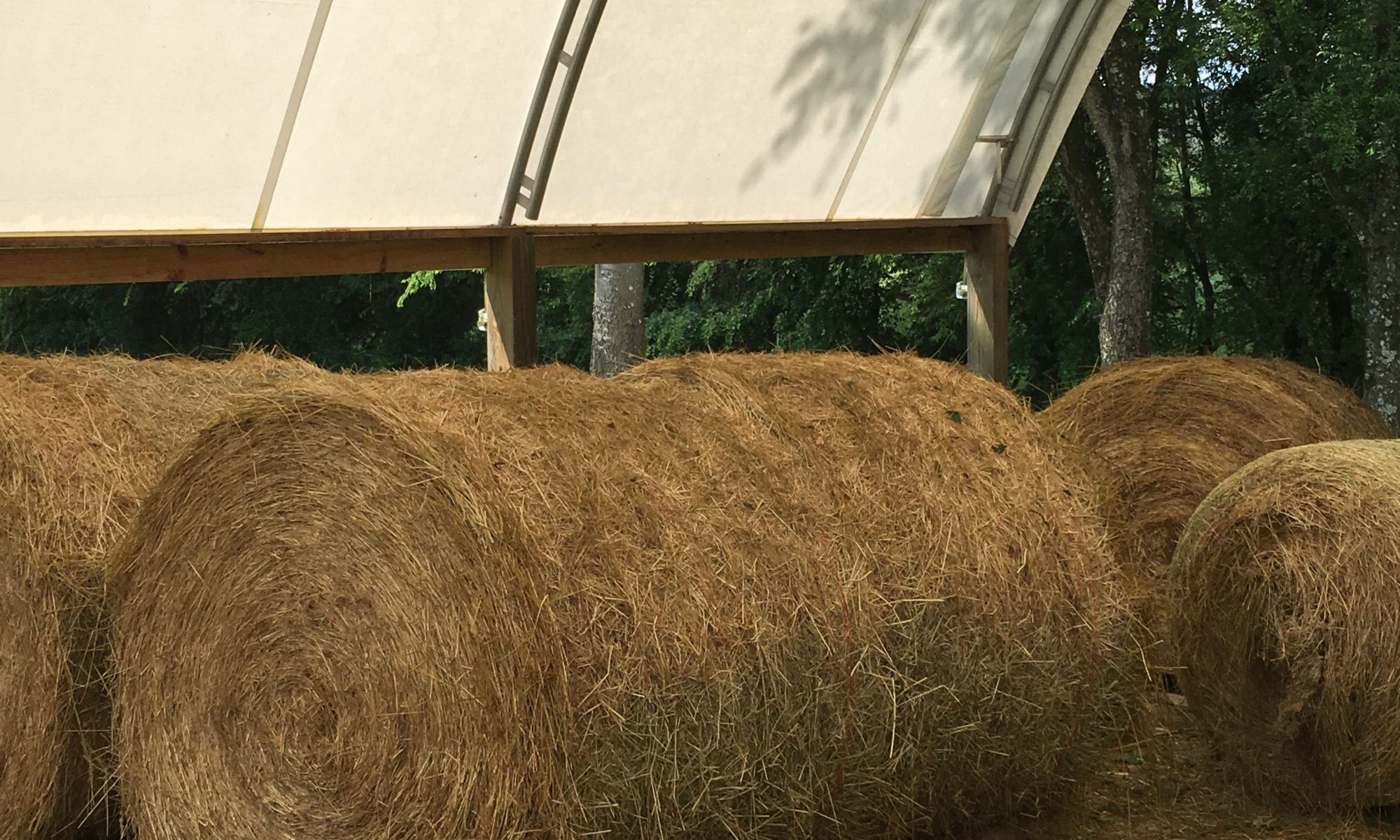

Dr. Bruno Pedreira
Associate Professor and Extension Forage Specialist
Department of Plant Sciences
Director, UT Beef & Forage Center
P: 865-974-3535
December is the last month of the year, which means that we made it through 2023. As forage growers, we could have improved soil fertility, added warm-season grasses to our forage program, stockpiled tall fescue, and used winter annuals to extend the grazing season to reduce the hay needs. We all know how much it costs to feed our cattle with hay and supplements, so a longer grazing season will help to reduce our variable costs. However, at this time of the year, there is not much to be done regarding forage production, but there are still alternatives to increase forage use efficiency and reduce hay losses.
Hay losses can vary a lot with the storage method. Handling and storing hay on the ground can lead to up to 40% dry matter loss. If hay is stored on gravel, tires, or a wooden rack loss can be minimized when compared to storing on the ground, but losses are still high (from 30 to 40%). More than 30% of the dry matter can be lost in the 6” outer layer of a 5-ft round bale due to inadequate storage. In addition, bales of hay left outside are subject to nutrient losses as rain washes water-soluble nutrients reducing the total digestible nutrients, and the oxidation process negatively impacts crude protein and fiber contents.
Storing on a wooden rack with a plastic cover (hay tarp) can greatly minimize the losses to around 6%, which is a great alternative if a hay barn is not available or if the hay produced is greater than the barn stocking capacity. The best way to store hay is in a barn, where the losses should be from 2 to 6%. However, after producing and storing hay, there is also a need to feed the animals. Unrolling a bale of hay in a pasture can result in hay waste that can exceed 25% of the original bale weight. Therefore, using a cone or ring can improve forage use efficiency with losses from 3 to 7%. Hay trailers and cradles are also alternatives, but the losses can be a little higher, from 11 to 15%.
After working hard to increase your hay production, consider also investing in adequate hay storage and feeding devices. Fewer losses also mean more forage available to feed. As we end this year, I hope that each bale can be well stored and handled during this winter season to improve your management strategies. Always feel free to reach out to your UT Extension agents if you have questions or need help figuring out what methods will help your operation.
Happy holidays and a joyful new year!
